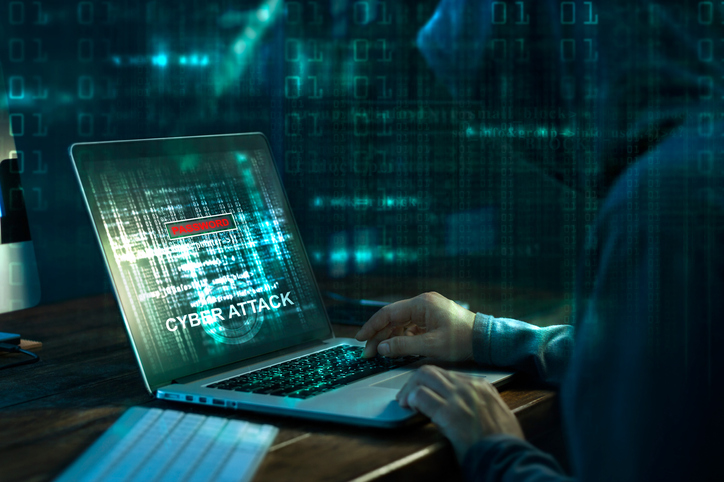
by Felicien | Mar 8, 2019 | Education
Daylight Saving Time for 2019 starts on Sunday, March 10th.
I’m sure you know how Daylight Saving Time (DST) works, but did you know not everyone in the US observes this time change? Arizona hasn’t observed DST since 1967, and Hawaii has never used DST. Michigan skipped DST from 1969 – 1973, while Florida is in the process of moving to keep DST year round!
Daylight Saving is a great excuse to sleep a little later this Sunday – take advantage, and don’t forget to double check your non-Internet connected timekeeping devices.

by Felicien | Mar 8, 2019 | Education
Daylight Saving Time for 2019 starts on Sunday, March 10th.
I’m sure you know how Daylight Saving Time (DST) works, but did you know not everyone in Canada observes this time change? Parts of British Columbia and Nunavut don’t observe DST, while a small part of eastern Ontario and most of Saskatchewan observes DST year round!
Daylight Saving is a great excuse to sleep a little later this Sunday – take advantage, and don’t forget to double check your non-Internet connected timekeeping devices.

by Felicien | Mar 7, 2019 | Education
In late February 2019, Toyota Australia was hit by a major cyber attack that knocked out its online presence and email systems. For days, the automaker had its ability to connect with customers significantly compromised.
The Toyota incident is yet the latest reminder of the disastrous impact of cyber attacks and why companies of all sizes and in all industry sectors need to be vigilant. Systems, users and devices all need constant monitoring and robust security measures in place to prevent such incidents from having significant consequences.
What happened at Toyota?
On 21 February, it was reported that Toyota Australia had suffered from a cyber attack. The company issued a statement that confirmed the attack, which reports indicate Toyota first learned about the day before. The statement noted that the initial analysis showed that no private customer or employee data had been accessed.
The company’s IT teams were working with “international cybersecurity experts to get systems up and running again,” according to the statement.
Four days later, the company’s website continued to display a stark message detailing its effort to recover from the attack. The company created an emergency call centre to address inquiries from customers.
The company has reported it has “no further details about the origin of the attack.”
What impact is the disruption having on Toyota customers?
The web message made note of several important issues affecting its customers. The company reports having only “limited capabilities to respond” to customers. The Toyota VIN Checker function is down, for example.
Of more significant concern is the impact on two important recent recalls facing Toyota customers. One recall, begun in 2018, affects airbags inflators in Corolla and Avensis models. As the airbags age, high temperatures and humidity can cause the airbag to activate with an explosive force that could send metal fragments towards car passengers, leading to serious injury or death.
In December, the company also recalled 2,640 Corollas, this time to replace a transmission assembly that could detach, resulting in a loss of power.
How big a problem are cyber attacks in Australia?
Cyber attacks cost the Australian economy $1 billion annually. Here are some other statistics on the effect on Australian businesses (2017 numbers unless indicated otherwise):
516,380 small businesses were victims of a cybercrime
The average payment was $4,677 for a small- or medium-sized business to recover their data after a ransomware attack
One in four enterprises suffered 25 hours or more of downtime after being hit by a cyber attack
Only one in three small- and medium-sized businesses have continuous system backup practices in place
It cost medium-sized companies $1.9 million to recover from a cyber attack.
In the first six weeks after enacting the Notifiable Data Breaches scheme in February 2018, the Office of the Information Commissioner received 63 notifications. Those numbers have grown steadily, with 242, 245 and 262 breaches reported in the last three quarters of 2018, respectively.
Malicious or criminal attacks accounted for the largest number of data breaches reported in the fourth quarter – 64 percent of all reported incidents. Of those malicious or criminal attacks, 68 percent involved cyber incidents, including:
Phishing (43 percent)
Compromised or stolen credentials (24 percent)
Ransomware (10 percent)
Brute-force attacks (8 percent)
Hacking (8 percent)
Malware (7 percent)
A closer look at the fourth-quarter statistics gives a clearer picture of the sources of attacks, types of attacks, data affected and sectors being targeted (with percentages):
Source of attacks
Malicious or criminal attacks (64 percent)
Human error (33)
System faults (3)
Information disclosed due to human error
Personal information sent to wrong recipient-email (27.1 percent)
Unauthorised disclosure via unintended release or publication (17.6)
Loss of paperwork or data storage device (14.1)
Personal information sent to wrong recipient-mail (11.8)
Failure to use BCC when sending email (10.6)
Unauthorised disclosure-failure to redact (9.4)
Personal information sent to the wrong recipient (3.5)
Type of data affected
Contact information (85 percent)
Financial details (47)
Identity information (36)
Health information (27)
Tax file number (18)
Other sensitive information (9)
Top industries attacked
Health services (21 percent)
Finance (15)
Legal, accounting and management (9)
Private education (8)
Mining and manufacturing (5)
What companies can do to protect themselves?
The Reserve Bank of Australia warned in October 2018 that Australian businesses were vulnerable to cyber attacks and the catastrophic losses that could ensue.
The Cisco 2018 Asia Pacific Security Capabilities Benchmark study noted that Australia was most under attack of the 11 countries evaluated. The numbers are stunning. Ninety percent of Australian businesses report facing up to 5,000 threats daily. Of those companies, a third face between 100,000 and 150,000 daily attacks and 7 percent see more than 500,000 attacks per day.
What can Australian companies do? Here are some of the most critical areas of need.
Comprehensive protection
Companies need to invest in a multilayered approach to protection of hardware, software, systems, networks, access points, devices and users. As seen in the data above, the attacks can come from a deliberate attack by an outside source, but often come from simple human error.
A comprehensive approach includes sound policies, technology and awareness. Together, these tools give your business the right protection to combat attacks.
Firewalls
A next-generation firewall protects your computer network. Firewalls help detect, contain and eradicate unwanted intrusions before serious harm can come to your systems. They also can be used to inspect information sent to and from the company and block access to and from risky URLs.
Anti-virus software
To protect users from spam, phishing attempts, viruses and malware, your devices need installed software that automatically scans and quarantines suspicious emails and activity. These tools should be automatically updated in the background to ensure continuous protection from threats new and established.
Monitoring
Tools can be deployed that continuously monitor networks, devices, access and usage, using pre-established rules about what is and is not allowed. Automated monitoring tools can detect and detain threats while issuing alerts to key personnel about identified issues.
Business continuity and disaster recovery
Companies need to develop the policies and procedures that will allow for little to no interruptions should a natural disaster or cyberattack occur. These guidelines establish chains of command, protocols and roles (which may be different from typical job responsibilities) during a crisis. These plans should be tested to ensure all components work smoothly and plans should be modified as needed.
Employee awareness and training
It is important that companies invest in their employees to further an understanding of what cyber attacks are, what damage they can do and how workers can prevent them. Showing employees examples of suspicious emails, making sure they understand data privacy policies and testing their responses builds resilience and understanding.
The Toyota Australia incident will not be the last high-profile example of cyberattacks to hit businesses. But preparation can go a long way to reducing the number and impact of such attacks.

by Felicien | Mar 7, 2019 | Education
Business executives, business owners, C level executives, and business managers share Blockchain information. One of the outstanding leaders of IT service companies across the globe is known as Infiniwiz. Our IT service strives to educate and train professionals in the business arena who seeks knowledge of the newest, most up-to-date trending IT technologies.
Through the combined efforts of our team of professionals, companies across the globe realize a significant increase in profitability. Infiniwiz increases the efficiency of companies; thus they see a vast improvement in staff morale. The businesses we cater to report improved communication between business owner and employees. This higher technology is improving all levels of customer satisfaction. The outcomes we see are essential to business owners, CEOs, presidents, and technology decision makers.
The Blockchain, Changing Technologies
Our computer technology is forever changing and with these changes come more elaborate digital technologies to learn and adapt to. Business owners must keep up with current and trending digital changes to keep their businesses profitable. Even though the public arena adopted Blockchain in or around 2008, many novice computer users never heard of this form of encrypted records storage. This article targets business executives, business professionals, industry specialists, or executives of any company with a 10-250 employee base who seek knowledge about a relatively new and vital step towards the storing of essential digital data. There is now a mass collaboration over the same network on a global level.
A Bit of History
This highly technological concept came into being through the work of someone known only as his alias Satoshi Nakamoto, in 2008. The original consensus was that blockchain was to serve in the function of a ledger for the bitcoin cryptocurrency. This technology came into being with one focus in mind; to solve the problem of spending without the need for trust in another individual or a central server. The design of the bitcoin prompted the invention of other applications that could be widely used and easily read by the public using cryptocurrencies. In the beginning, the blockchain, developed for business use only, is not commonly used in the public domain but fast gaining momentum due to its incorruptible design. Cryptology is the process by which an ordinary text converts into unintelligible text and vice versa or the digital technology of the Blockchain
The Definition of The Blockchain
In the simplest of terms, the Blockchain is a growing list of digital records that link together, using cryptography that contains three elements; cryptographic hash, timestamp, and the transaction data. According to Don and Alex Tapscott of Blockchain Revolution, the Blockchain is just a chain of blocks forming digital information in each block and data stored in a digital chain; the Blockchain offers as an incorruptible digital ledger of economic transitions. According to reports from Blockchain Revolution, the Blockchain is programmed to record not just financial transactions but everything of value. The Blockchain allows senders to transfer information from a plain text to an encrypted document to the receiver with a single shared key. The Blockchain is a decentralized and distributed public ledger. There are no retroactive alterations; it’s an independent form of verification, with autonomous management.
The Blockchain, for instance, has a network with no centralized point and operates within that network. Imagine thousands of computers in the same network system receiving the same spreadsheet with the same daily updated information. This information comes as shared encrypted data over many computers in the same network with one single point of storage for the data. A Blockchain is merely a chain of blocks containing digital information in each block. Transition information, participant information and distinguishing information comprises the Blocks in a chain.
This Technology Offers Heightened Security
This data is for public use and easily verified. The great thing about this is that hackers cannot hack into the information because there is no centralized point, as millions of people share the host computer.
Blockchain has a decentralized network.
No one person controls the information in the chain.
There is no single point of failure.
Everyone in a network is accountable.
No one can miss a transaction.
There is no such thing as a machine error.
This system verifies transactions through the recording of that transaction on a main shared ledger.
This process is secured.
This technology offers transparency.
This technology offers automatic ten-minute checks by the system.
This system is self-auditing
Information is uninterruptible, non-altering, in which data cannot be manipulated or overridden inside or outside the network.
This new technology offers a more accurate way in which to verify transactions using an encryption technology versus the traditional username and password that is so vulnerable to hacker attack.
This technology is incorruptible.
Offers no infinite reproducibility
Single transfer confirmation
Maintains title rights
Compels offer and acceptance
How does Blockchain Work?
There must be a transaction that occurs. That transaction must be verified and stored, and the block must have a hash. The advent of a blockchain used extensively in the financial industry on a global level demands the education and training of more developers for this technology. Soon, we shall see the ability to decentralize sensitive and personal identity information. Sensitive data currently held in a central location is at risk for hackers. However, the blockchain eliminates those risks because there are no centralized locations. Confidential information before the Blockchain remains vulnerable to hacker attack due in part to substantial security problems.
How Does One Access Their Blockchain?
A Public Key
This system allows for public and private keys of entry. A key is a random group of numbers automatically generated for the individual. This group of numbers becomes one’s address within the blockchain. These numbers identify each recipient as the owner.
A Private Key
This system requires a private key to gain access to personal digital information. When individuals store sensitive information in the blockchain, hackers cannot gain access. The block protects all the digital data and assets such as stored bitcoins, safeguarding the information with your private key. This storage is known as a paper wallet.
The Future of The Blockchain
2017 was the year that saw a massive launch of blockchain technology for large-scale use, dispelling a considerable amount of public skepticism. This technology increased to nearly 650 percent since 2015! Advancements and strides continue in this field every day; even though this technology is in its early stages and so far shows new concepts changing the way the world does business. There are many other options that blockchain offers private citizens and companies. The following list is just a very few ideas that utilize the Blockchain.
Sharing sensitive documents
Crowd-funding
Auditing
Predictions of markets
Intellectual property
Identity management
Smart contracts
Data management
Stock trading
Sharing economy
Government entities possibly starting at the voter booths
Smart contracts
Crowdfunding
Supply chain auditing
File storage, decentralizing traditional file storage
A new incorruptible, safe, hack-free network
A total internet made up of only decentralized websites
Securely protected intellectual properties
Now the Disadvantages of The Blockchain
Contact Infiniwiz of Chicago to become your quality IT service provider. We have a staff of genius high-technology professionals working hard, 24/7 for businesses across the globe.

by Felicien | Mar 7, 2019 | Education
Why Do Local Small Businesses Need IT Services?
Many small business owners are entrepreneurial and want to do as much as possible on their own. However, specific tasks require technical expertise that would distract owners from operating their businesses. IT support services are a perfect example of the type of task that small businesses owners would do better to outsource to reasonably priced local firms. Having a business of any size is tough without proper IT functionality, so it’s well worth the investment overall.
How Does Outsourcing IT Services Result in Substantial Savings?
Businesses hire outside firms to take care of their various IT needs because it’s more cost-effective. Hiring in-house IT resources can be prohibitively expensive. Also, you may not require full-time support for most of your IT needs, so it doesn’t make sense to hire two to two dozen people to build out a proper IT team when a local IT firm already has the staff to meet your intermittent needs without breaking the bank. It also saves you the hassle of hiring, managing and processing payroll for these resources.
How Do IT Firms Provide Fast Access to Assistance?
When you contract with local IT companies, you often have 24/7 access to help during an emergency. If you need the same support for salaried or hourly in-house resources, you can expect to pay for overtime hours or compensate employees with time off for working after hours. Also, a team of experts who deal with a variety of systems and clients is likely to find and resolve your issues more quickly. Most IT firms assign an account manager to each small business so that you can build a relationship and have a single point of contact for emergencies. The expenses of this concierge-style offering are much lower than the cost of paying an entire team of IT employees to work in shifts. This is especially important for businesses with extended hours, who may need regular support after normal business hours.
What Benefits Do IT Service Firms Offer for Safety And Security?
Small business owners are so busy with day-to-day tasks they often don’t have time to think about data security. Hackers and cybercriminals take advantage of this to hack into networks to steal data or hold your customer database for ransom. Since privacy is becoming a bigger issue than ever, data security and safety are a huge component of your company’s reputation. Outsourcing firms have security specialists on staff who keep up with the latest advances in the industry. Proactive professionals in the security field are passionate about what they do. They often suggest changes to your network that help protect your employees, customers and the business as a whole. This is crucial because best practices change with the advent of new technologies, so having experts monitoring your systems significantly reduces your overall security risks.
Can an IT Services Firm Increase Your Productivity?
Small companies have a tendency to assign IT responsibilities to employees with any type of IT knowledge. This leads to mixed results. If you hire someone with the capability to learn new technology quickly, they still need time to master the systems in place at your company. Engaging an outside IT firm means that they will assign professionals with the required skill sets to complete the tasks required to run your systems optimally. This lets you concentrate your hiring and mentoring efforts on employees who can help you grow your business. Since IT is outsourced, you can simply call your IT services firm and get back to work while they take care of the issue. This saves time and frustration and increases your productivity.
What Are Some Additional Advantage To Hiring IT Service Firms?
Technology, by its very nature, is constantly evolving. Hiring in-house staff brings with it some additional expenses to keep them up-to-date. This includes travel and educational expenses for training on existing systems and certification and training on new technology, such as cloud solutions. Disaster recovery strategies, mobility expertise and many other specializations can quickly explode your IT budget. Instead, hire a team of trained specialists with a single phone call to your local IT services provider.
Can Outsourcing IT Service Bring You Peace Of Mind?
If all the risks associated with data breaches, system outages and other IT problems can keep you awake at night, it stands to reason that an affordable partnership with reliable IT experts can bring you peace of mind. Be clear in your expectations and make sure you understand the contract you sign, so there are no unpleasant surprises down the road. Do your homework and check with other companies that have worked with the firm you want to hire. Knowing that a qualified team of professionals is ready and waiting when you pick up the phone goes beyond giving you peace of mind. It lets you focus on growing your enterprise without worrying about how the technology can stand in your way.




